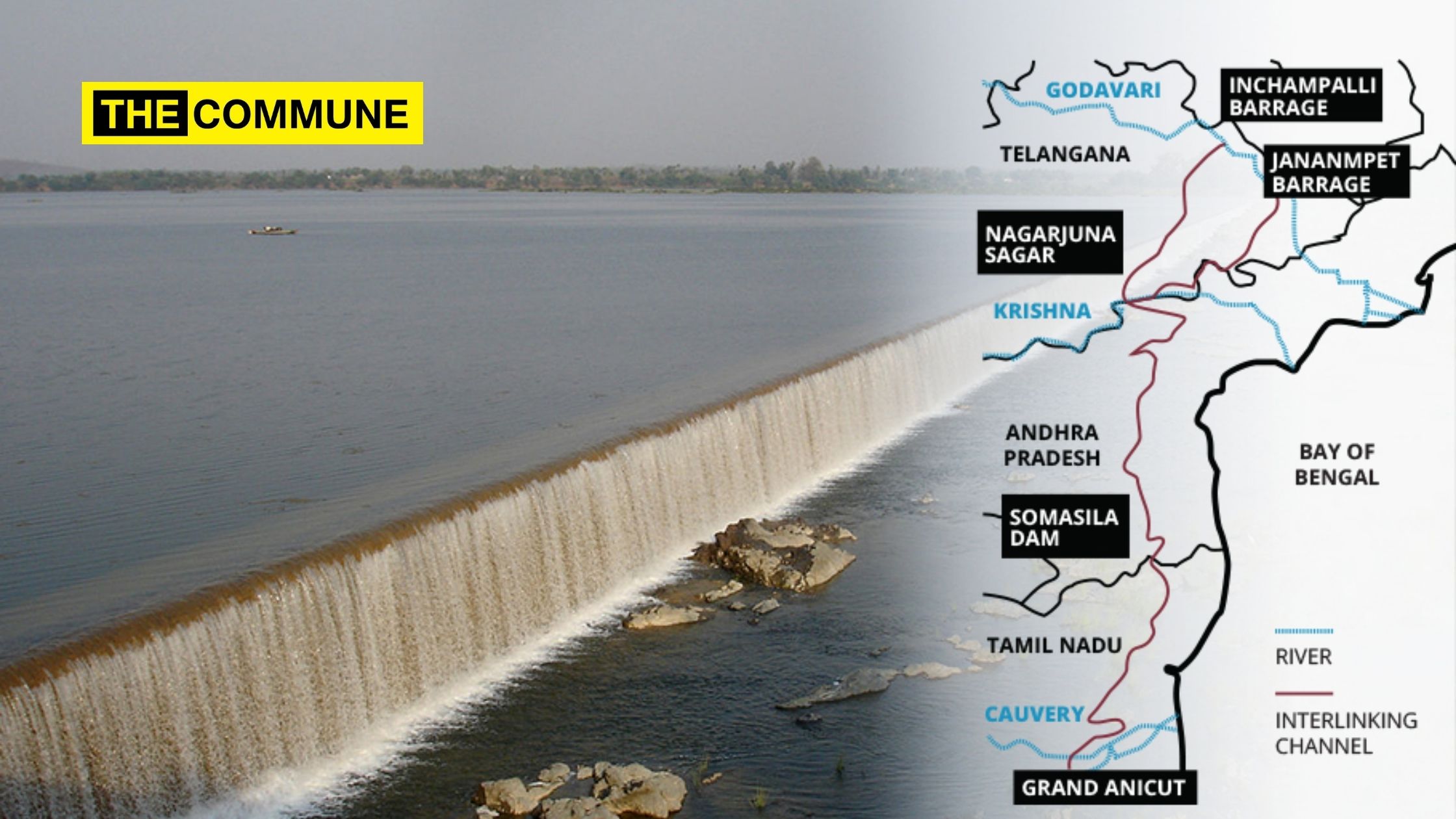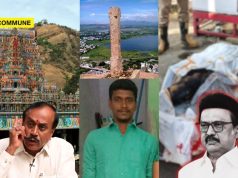
The central government has given the ‘green signal’ for the Godavari Link project. With the cooperation of the state governments, the work is likely to start soon. The Godavari is the largest river in the country, after the Ganges and the Indus. The river originates near Nashik in the state of Maharashtra and travels 1,450 km through Odisha, Chhattisgarh, Telangana and Andhra Pradesh and joins the Bay of Bengal.
Annually, through the Godavari River, around 1,100 TMC, water mixes with the sea without any use for it. Similarly, the Krishna River, which originates at Mahabaleshwar near Satara in Maharashtra, travels 1,300 Km via Telangana, Karnataka and Andhra Pradesh and joins the Bay of Bengal near Vijayawada. To this end, a pumping project called ‘Boleswaram’ is being implemented.
The Central Government has decided to implement the Godavari-Krishna-Pennayaru-Balaru-Cauvery link project. Implementation of this river connection project will reduce water scarcity not only in Tamil Nadu but also in Telangana and Andhra Pradesh. In addition, it will also help increase irrigation, and also fulfill the water needs of factories.
This is the long term dream project of Tamil Nadu. For the past 11 years, the anticipation for this project has been increasing every year. The Central Government, through the National Water Development Agency, has prepared a detailed project report to implement the river connection project. Accordingly, it has planned to implement the Godavari-Cauvery link in three designs.
- 1st Design:
A canal of 1,211 km is to be constructed from Eechampally in Jaisankar district of Telangana state to Kallanai in Thanjavur district of Tamil Nadu. This includes 19 km of tunnels and waterways. Through this project, 26 lakh acres of land will be newly irrigated in the areas where the canal travels. To implement the project, 60 MW and 120 MW power plants will be set up at two locations. Across the Godavari River, a 87 meter long, 15.89 TMC, capacity gate is to be constructed at Eechampally. From here, it is planned to discharge 70,000 cubic feet of flood water per second. ₹ 73,611 crores will be required to implement this project.
- 2nd Design:
In Janampet, Mahabubnagar district, Telangana state, 1,252 km from the Godavari river, a canal is to be constructed and connected with the Cauvery at Thanjavur district fort. For this, a 22 km, tunnel waterway should also be constructed. A 120 MW power plant should be set up to carry water in the pumping system. It is also planned to install solar panels and generate electricity in the canal. The project will irrigate 19.6 lakh acres of new land in the canal-travelling states. ₹60,361 crore is required for this project.
- 3rd Design:
It plans to bring water from Janampet to Nagarjuna Sagar Dam through a pipeline. From there a canal is to be built and connected to the Thanjavur fort. For this, 1,211 km of canal will be constructed, including 50 km of tunnel waterway. ₹90,563 crore is required to implement the project in this format. Through this project, up to 11 lakh acres will be newly irrigated.
Of these three designs, the first design between Eechampally – Kallanai has been selected by the Central Government. The Government of Tamil Nadu has extended full cooperation to implement this project. The cooperation of Telangana, Andhra Pradesh, Odisha, Karnataka, Maharashtra and Chhattisgarh is also required. The project is to be implemented gradually, with a loan from the World Bank or the Asian Development Bank. Through this project, 247 TMC, Godavari overflow will be diverted to Krishna – Pennayaru – Palaru – Cauvery river.
The Karnataka government has been at loggerheads since the beginning, demanding that they be provided with water under the scheme. The governments of Telangana and Andhra Pradesh have not yet pledged their cooperation. The drinking water requirement of the city of Hyderabad will also be met. In Andhra Pradesh, Krishna, Guntur, Prakasam, Chittoor and Nellore districts will benefit.
In Tamil Nadu, not only delta districts but also Tiruvallur, Vellore, Kanchipuram, Thiruvannamalai, Villupuram, Cuddalore, Perambalur and Trichy districts will benefit. Not only the drinking water demand of Chennai but also the water demand of the factories will be met. Therefore, the cooperation of Telangana and Andhra Pradesh is expected to be received soon. With the co-operation of the states, work on the river connection is likely to begin soon.





-
Report prepared by 35 officers:
Through the National Water Development Agency, a detailed project report was prepared and completed in March 2021. The report, which has a total of 382 pages, has been prepared by 35 officers from the states of Delhi, Chennai, Bangalore and Hyderabad, divided into three groups and carried out various studies.
The team includes National Water Development Agency Director Bhopal Singh and Southern Region Chief Engineer Sangua. Various departments of the Central Government, including the Central Water Resources Authority, have provided their assistance in preparing the report.
- The Execution of the Project:
Godavari water is to be brought from Eechampally in Telangana state to Musi dam and Nagarjuna Sagar dam through canal and mining waterway. In Nellore district of Andhra Pradesh, a connecting canal is to be constructed to the Somasila Dam, which is being built across the Pennayar. A connecting canal is to be constructed across the Araniyar from the Somasila Dam and along the Poondi Lake in the Tiruvallur district of Tamil Nadu.




